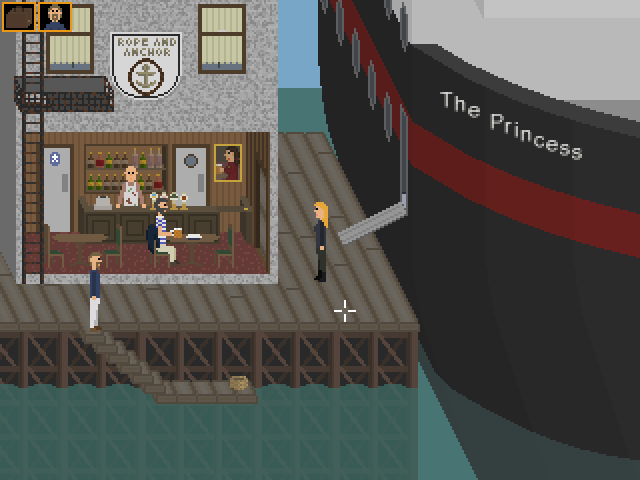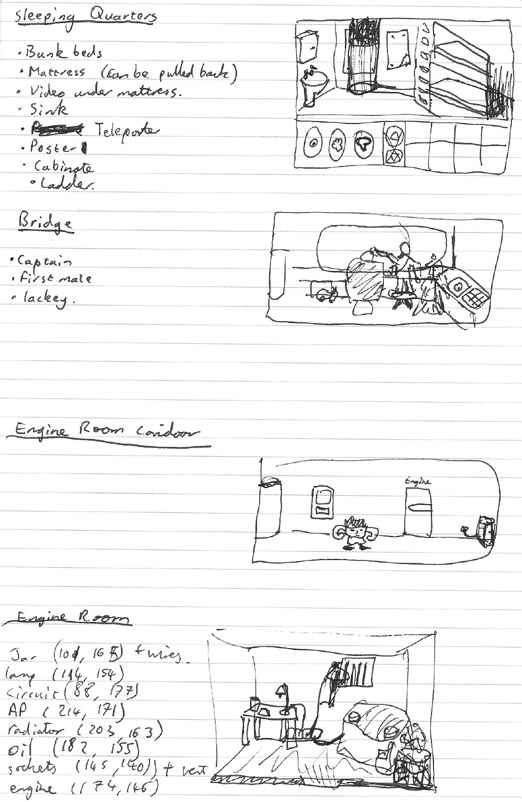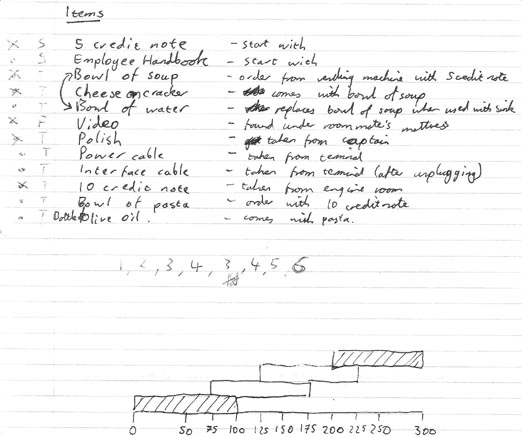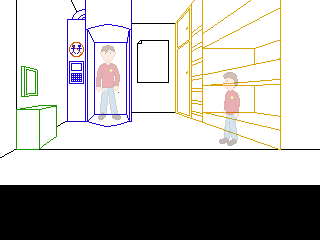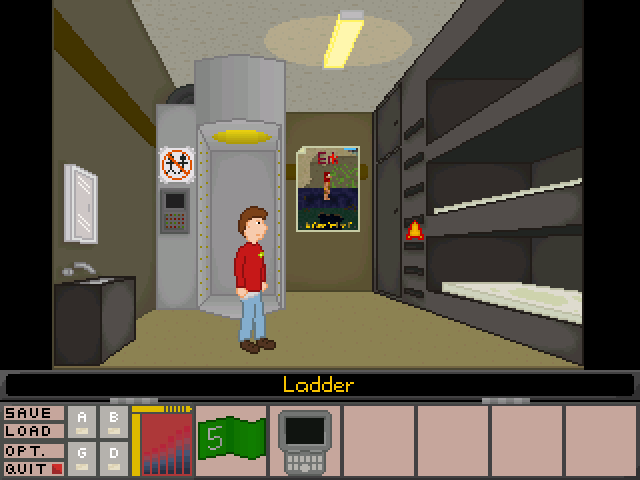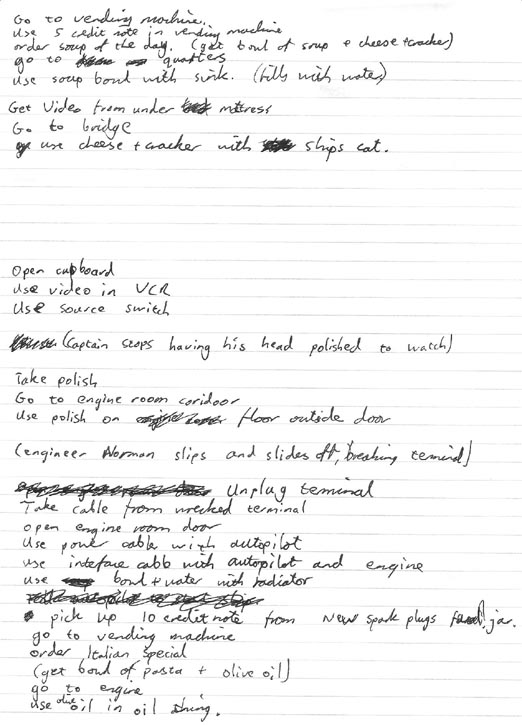WARNING: THE BELOW DEFINITELY CONTAIN SPOILERS! IF YOU’VE NOT PLAYED ROBBING THE PRINCESS PLEASE DO SO BEFORE READING!
For those interested, here’s a few facts about Robbing the Princess:
- All of the final game script (finished by about the 5th day) got put into the game. There was nothing I was trying to get in that didn’t make it.
- Like Breakdown I did have a few extra ideas on a strict “if I have time” plan. I didn’t, as expected, so I didn’t do any work towards them.
- One of the ideas was an introductory sequence that would teach the player the controls and fill in a bit of the backstory. The player would control Alec only who would be on a train. The player would be walked through a simple puzzle with text prompts teaching them commands such as picking up and using items, then would have a confrontation with the unnamed bad guy on the roof of a carriage. The bad guy would escape by being airlifted by a convenient helicopter – see why I didn’t have time to implement this? – leaving behind his coat (intentionally as it later turns out). The packing slip Alec mentions in the intro of the game would be found in one of the pockets, and Alec would radio Suzy telling her to meet him at the docks.
- The ending is a bit of a cliffhanger, but I would have liked to make it more so. The end credits show The Princess sailing off into the sunset, and I’d have liked to have a submarine surface behind them at the very end.
- If I was going to continue the story (and I have no desire or intention to) I’d pick up with The Princess being torpedoed and the player having to solve a puzzle to get Alec and Suzy out of the sinking ship. They’d then escape to a nearby island and probably have to work out how to get back to the mainland.
- I have no idea what was supposed to be in the crate. Stolen property and/or something that could be used for great evil probably. I never came up with any of that backstory. Hey, Mission Impossible 3 got away with it, why shouldn’t I?
- I wrote initials are hidden in the otherwise pretty random pebble-dashing on the front of the pub. I then put the ladder and fire escape in front of them, so you can’t actually see them. I did a similar thing with the grass in Erk.
- I tried to use a particle effect for the gas but I couldn’t get it to work with alpha channels or transparency, so I just hand animated it instead.

